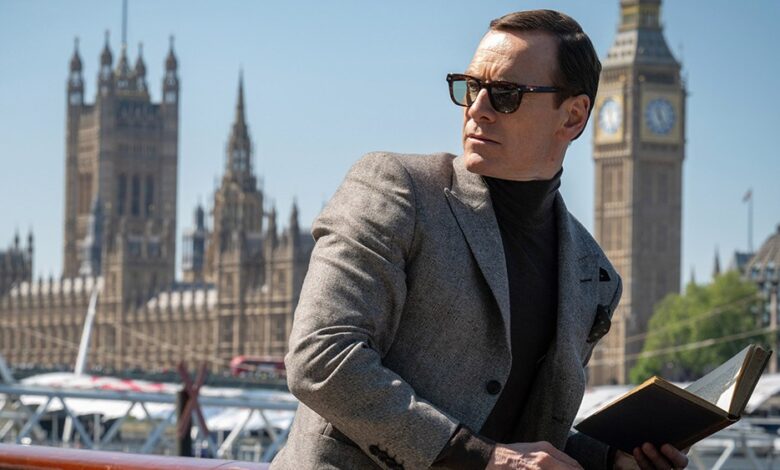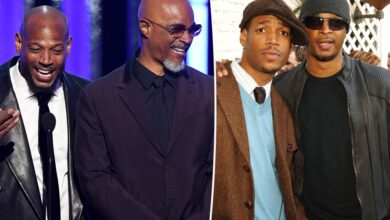It’s Time for Steven Soderbergh to Take a Bigger Swing

Certain movie directors — Hitchcock and Tarantino come to mind — constitute a genre unto themselves. Steven Soderbergh was never like that, at least not until he started making his “little” films: the cleverly plotted low-budget indie palate cleansers that he got into the habit of directing in between his more deluxe features. He did it as a way to recharge his batteries, and to remind himself that moviemaking is supposed to be fun.
You could say that Soderbergh’s first official “little” film was “Full Frontal” (2002), an all-star Hollywood satire made for $2 million, or you could say that it was “Bubble” (2005), a Middle American existential crime drama that also happened to be the first day-and-date release. In a way, though, the original Soderbergh “little” film was “Schizopolis,” the aggro experimental doodle he made all by himself and released in 1996, as a way to clear his pipes after what he characterized as the miserable experience of directing “The Underneath.”
At the Toronto Film Festival that year, I had breakfast with Soderbergh, and our chat stretched on for hours, powered by the joy he felt at having gone back to his kid-with-a-camera roots in “Schizopolis” — and, at the same time, at having signed on to make “Out of Sight,” the film he was about to start directing. Seven years after “Sex, Lies, and Videotape,” he felt reborn as a filmmaker.
That’s what the little films do for Soderbergh. They keep him engaged, connected to the spirit of his art form. He’s been working as his own cinematographer for 25 years, and he sometimes edits his own films as well; this gives him a one-man-band control that most directors don’t have. Soderbergh, especially in his little films, is the master of his domain. But he’s also a big fish swimming around in a small cinematic pond.
The little films, by now, are their own genre, and we Soderbergh fans all have our favorites. Here’s my own breakdown: The three best ones are “The Girlfriend Experience,” “Kimi,” and “Bubble”; “Side Effects,” “The Laundromat” and “Let Them All Talk” are good; “Full Frontal,” “Haywire,” and “Presence” are meh. Overall, not a bad track record. And I haven’t even mentioned Soderbergh’s current movie, the highly acclaimed “Black Bag,” an exhilaratingly immersive thriller about married British spies — it’s like a true-romance John le Carré — that cost $50 million, but I still think it qualifies as a “little” Soderbergh film, and maybe the apotheosis of the form, since it’s such an intricate and hermetic piece of puzzle-movie minimalism. In terms of quality, I would place it at the very top of the Soderbergh-little-movie pyramid. I don’t think he’s ever going to make a better one than this.
But that raises a question. For Soderbergh, has making little movies become a way of keeping himself sane and centered…by underachieving? As much as I’ve enjoyed many of these films, the reason that virtually none of them have ever made my 10 best list (lone exception: “The Girlfriend Experience”) is that they have a built-in forgettability. I think that’s because the process of making them is, for Soderbergh, more important than the result. He’s a bit like Woody Allen once Allen lapsed into his churning-out-another-okay-comedy-a-year phase. Soderbergh’s movies are fine, and sometimes vibrant, but I’d say that he’s been thinking little for too long. Almost every movie he makes now is a genre movie. I’m sorry, but that’s playing it too safe.
Remember 25 years ago, when Soderbergh made “Traffic”? It was a bone-deep drama about the drug war, and though no one expected it to be a massive hit, it turned out to have a who-knew-they-would-come-if-you-built-it? quality. (It grossed $124 million.) We live in a different movie world now. Yet Soderbergh, who is considering making a post-Covid sequel to his highly prescient 2011 thriller “Contagion,” is a filmmaker who has the goods to break out of his genre bunker. Recently, a lot of films have been overpraised for taking “big swings,” as if that alone made them great. But it truly is time for Steven Soderbergh to take a big swing. He’s a master, and it’s too late in the game for him to stay little. He needs to show us, once again, that he’s not just a supreme puzzle maker but someone who can lure adults back into movie theaters by making a movie so compelling in its reality that it singes the air around us.




